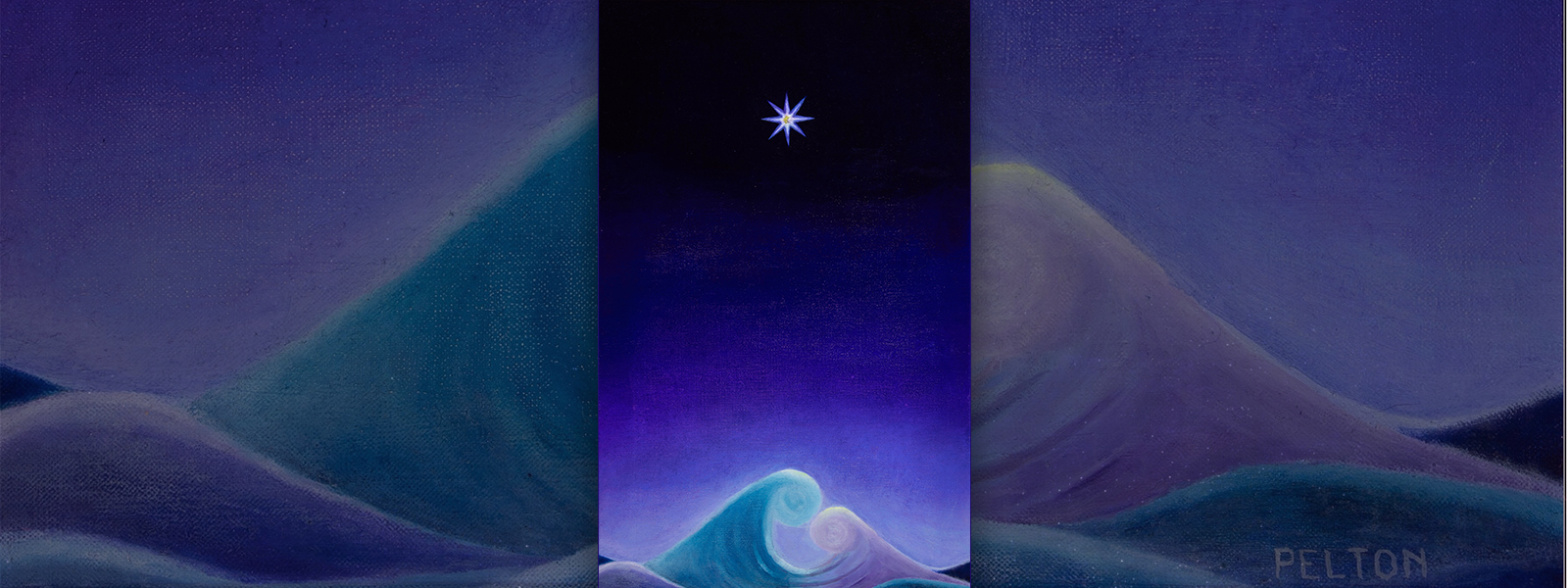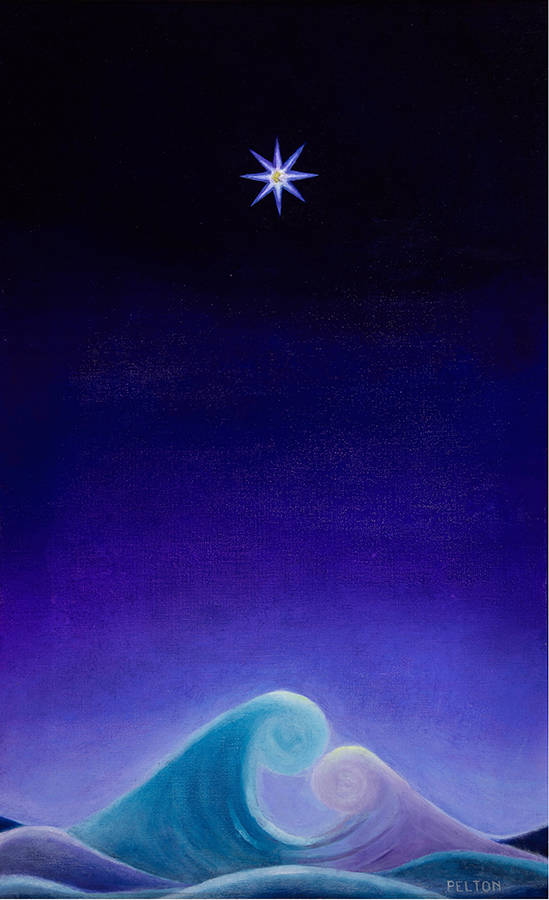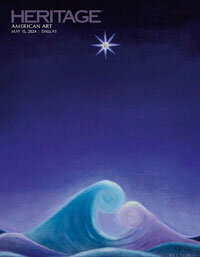ONLY FOUR SUCH COSMIC CREATIONS HAVE COME TO AUCTION IN NEARLY THREE DECADES
By Christina Rees
There’s something in the American Southwest that not only has called out to generations of artists but also has enabled some of the greatest American and European painters to ascend to the realm of visionary. In the early and middle part of the last century, some of those artists experienced a level of liberation in that vast landscape that allowed them to become true legends. It’s not terribly surprising that two of the most famous, Georgia O’Keeffe and Agnes Martin, were unconventional women in search of a kind of freedom, if not rebirth, away from the constraints of polite society.
Agnes Pelton ‘Purple Star Icon,’ conceived 1936, completed circa 1939-1940. Oil on canvas. 23-1/2 x 14-1/2 inches (59.7 x 36.8 cm). Available in Heritage’s May 15 American Art Signature® Auction.
It’s also not surprising that a third name was posthumously added to this small but significant canon of tremendous female painters who were drawn to the desert. Agnes Pelton sought and found her ultimate place in the desert town of Cathedral City, California, in the early 1930s, after years of living and working on the East Coast, and in her chosen landscape became one of the most influential and inspirational painters of the last century. Her acclaimed retrospective at the Whitney Museum of American Art in 2020 catapulted her into a spotlight that has new generations of artists and collectors, institutions and historians buzzing with admiration and fascination with the heretofore mysterious genius of Desert Transcendentalism.
Only weeks before the cataloging was complete for Heritage’s May 15 American Art Signature® Auction, an elusive and mythologized Pelton painting surfaced: Pelton’s Purple Star Icon emerges as an exceptional piece among her rare transcendental abstractions. Only four of her Desert Transcendental paintings – her most iconic and sought-after works – have graced the auction block in the last 29 years, and this larger and pristine variant of her historicized Purple Star Icon was until now known only through archival records.
May 15, 2024
Online: HA.com/8163
INQUIRIES
Aviva Lehmann
212.486.3530
AvivaL@HA.com
This extraordinary painting leads an auction that continues Heritage’s ascent as a leader of scholarship and storytelling in the category of great American Art, which includes 18th– through early 20th-century painting, Golden Age Illustration Art, Modernism and Magic Realism, blue-chip sculpture and more. Heritage’s approach to showcasing the greatest artists who helped build the very foundations of our national identity is careful and considered; every one of the 92 lots in this tight auction is marked by a rich provenance and considerable historical weight. Significant works by Rembrandt Peale, Dean Cornwell, Jared French, George Sotter, Joseph Leyendecker, Hughie Lee-Smith and John Ford Clymer are on the bill – and here, a prime painting by the indomitable Agnes Pelton joins them.
The grand unveiling of this piece draws back the curtain on a treasure previously known only in theory.”
–Aviva Lehmann, Senior Vice President of American Art, Heritage Auctions
The original sketch and handwritten notes documenting the nascent idea for Purple Star Icon appear in Pelton’s sketchbook covering the years 1936-1949. In it, Pelton notes that she conceived of the composition in the summer of 1936, a handful of years after her move to the then-quiet desert town near Palm Springs. Cathedral City is where she found her ultimate refuge and vision and lived until her death in 1961. Under the vast desert sky, she penned the inception of this work:
“Purple Star Icon
Intense deep purple around star- duller blue but not much lighter away from it, & not too light toward horizon –
Deep night –
Star luminous white points not too sharp
Double wave [pencil drawing] Darker & lighter again
Sky showing spots of reflection of star in trough of wave.”
Pelton’s affinity for the cosmos was no fleeting impulse; it is a profound connection that began to weave its way through her abstract works after her inaugural visit to the California desert in the late 1920s. Stars became recurring symbols in her work, reflecting her belief in the cosmic communion between the celestial and the spiritual.
“This larger version of Purple Star Icon carries the same title as its smaller counterpart,” says Aviva Lehmann, Heritage’s Senior Vice President of American Art. “It was previously recorded in Robert Knott’s survey Abstract Art of the 1930s and 1940s published by Wake Forest University’s Fine Arts Gallery in 1988. The grand unveiling of this piece draws back the curtain on a treasure previously known only in theory.”
The painting’s radiating pale blue to blue-black sky, roiling desert sands below and luminous single star as its apex place it alongside other Pelton star-anchored compositions with which it shares a symbolic kinship, including Star Gazer (1929), The Guide (1929), Illumination (1930), Sand Storm (1932), Resurgence (1938) and Future (1941).
“The discovery and subsequent public offering of Purple Star Icon reveal Pelton’s legacy as an incomparably visionary painter,” Lehmann says. “It joins her pantheon of cosmic creations and stands as a radiant testament to her role as an artist who not only gazed upon the heavens but felt their sublime influence.”
 CHRISTINA REES is a staff writer at Intelligent Collector.
CHRISTINA REES is a staff writer at Intelligent Collector.



